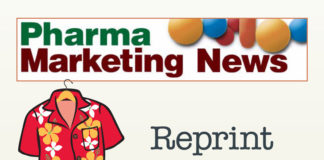Search engines have taught digital advertisers that relevance is everything. We now use evolved algorithms to interpret search terms based on the user’s perceived situation, time of day, location, and urgency. By incorporating this situational evidence, search engines provide the most relevant results, and targeted ads to match. In terms of digital pharmaceutical advertising, the same is true of medical calculators that have been expanding patient categories over the last ten years. Medical calculators have exploded in the past few years, from 40 calculators in 2005, to 550+ calculators today.
A new generation of med students, doctors, and nurse practitioners are forgoing the memorization of intricate diagnosis matrices found in cumbersome, old textbooks. Instead, medical students (and practicing doctors) say they’re downloading apps and visiting websites that provide free or advertising-supported calculators that conveniently fit inside their mobile phones. These calculators are often used at the “moment of decision” during practice hours. These calculator applications provide evidence-based clinical decisioning and support tools that aid doctors at the patient’s bedside in zeroing in on a diagnosis. This diagnosis is all done in a fraction of the time compared to searching textbooks and is more reliable and consistent than a doctor’s memory.
Some platforms, including Medscape and MDCalc, provide display advertising associated with the disease diagnosis profile in the application. For the pharmaceutical digital advertising community, this breakthrough of relevance allows advertising to be present at the bedside when a doctor is prescribing medication.
To be clear, the app is not recommending a drug based on the calculator’s outcome. Instead, relevant display ads are used in a contextual association to the diagnosis for the doctor to consider. Currently, each of the competitive apps is providing several hundred different disease calculators, which include internal medicine, general practice, hematology, emergency medicine, neurology, orthopedics, gynecology, and dozens more. MDCalc is in use by 1.6 million medical professionals globally, including more than 65% of U.S. physicians and 80% of U.S. residents. MDCalc has 550 decision tools or calculators covering 200 patient conditions in use with a development pipeline of 600+ undergoing their strict development process (that many will never pass.) Each calculator is developed and peer-reviewed by practicing doctors.
Medscape, the 800-pound gorilla of medical news and clinical information, provides its comprehensive collection of calculators, featured on their website. A simple weight-based dosage calculator is among the most popular, for example, and is found on desktop screens throughout hospitals and care facilities. The calculators are free and advertising supported on Medscape.com, although ads don’t always correlate to the patient’s condition based on a random sampling compiled for this story.
The critical distinction is that these apps are used in the lower sales funnel during the treatment decision-making process. What’s more, these calculators are action-oriented and lead to a decision, versus native advertising or content marketing that is educational and read passively in the research phase of a doctor’s workweek.
Calculate by QxMD, is a similar and popular app proving 400 calculators and decisioning tools but is currently not supporting advertising.
For those fearing that a doctor’s acumen and professional intuition may be replaced this form of evidence-based medicine (EBM) or artificial intelligence, that’s not the case here. The manufacturers of these calculators view them as an aid to doctors by bringing this fast and reliable information to the bedside. The information provided still requires the clinical judgment of a doctor.
Sources:
https://www.ebmedicine.net/store.php?paction=showMLpg&pid=3017



![6 Digital Tools at the Center of Healthcare Digitalization [INFOGRAPHIC]](http://ec2-54-175-84-28.compute-1.amazonaws.com/pharma-mkting.com/wp-content/uploads/2021/04/6DigitalTools_600px-218x150.jpg)




![6 Digital Tools at the Center of Healthcare Digitalization [INFOGRAPHIC]](http://ec2-54-175-84-28.compute-1.amazonaws.com/pharma-mkting.com/wp-content/uploads/2021/04/6DigitalTools_600px-100x70.jpg)




